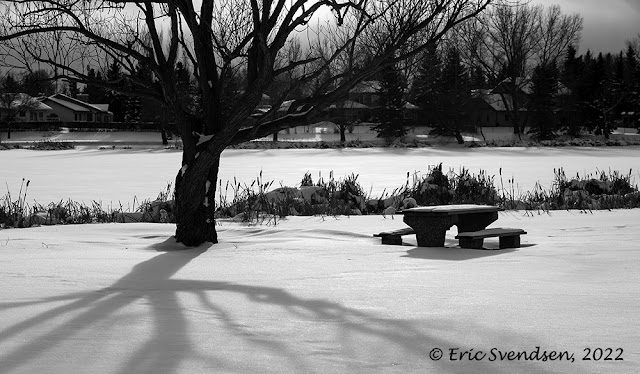Shooting into the sun - extreme backlighting.
Backlit situations are common in photography. If the background has more light falling on it or coming from it than the foreground (subject), we say that the subject is backlit. The degree of backlighting really depends on the situation. The culprit is almost always the sun, this is especially true when your camera is facing this celestial giant and the shadows it casts are headed in your general direction. Corrective measures are needed.
The changes I am referring to involve changing one or more of the three variables of exposure. Those would be shutter speed, aperture, or ISO. When shooting in automatic modes this means using your exposure compensation button (+/-) and estimating the amount of compensation required. Most cameras allow variation in the exposure by three stops, and I find that a setting of +1 or +2 is often enough to effectively counter backlighting. When shooting into the sun, however, a value of +3 or higher may be required.
So, what do you do if +3 is just not enough? In the photo above there are two factors affecting backlighting. Shooting in snow usually means somewhere between a +1 (modest amount of snow in the scene) to +2 (a significant amount of snow in the scene) setting. Throw the sun into the picture and an additional +2 or +3 stops are required. Suddenly you are looking at a possible exposure compensation of +5 or higher.
This is where shooting in manual mode comes in. I shoot mostly in manual mode because it allows me to precisely pick my exposure values. To achieve a 5 stop increase in exposure values I can alter any one of the three aforementioned controls. For example, going from an ISO of 200 to 100 gives me a +1 change. Altering the shutter speed from 1/500th to 1/125 adds another two stops. Finally, the aperture can be moved from f/11 to f/5.6 (2 stops difference). These three changes (+1, +2, +2) add up to 5 stops.
One of the challenges is determining the exact amount of compensation required. This is where bracketing comes in. Most cameras equipped with auto-bracketing allow a -0+ series of adjustments (-1, none, +1 for example). Backlighting means using only + values. This is another reason why shooting in manual exposure mode is advantageous. You could photograph 6 images, starting at 0 and adding a stop for the exposure for every consecutive shot. One of them will likely turn out. If you did this using a tripod, you could even take those images later and input them into an HDR program. The results can be spectacular.
Thanks for reading. www.ericspix.com




Comments
Post a Comment